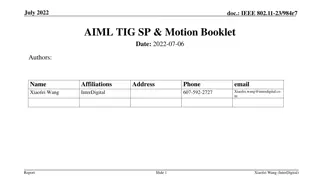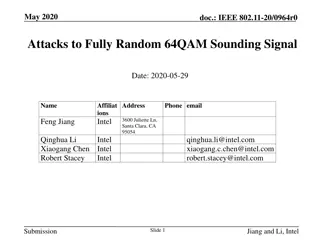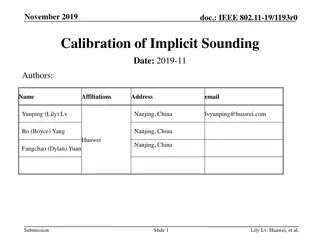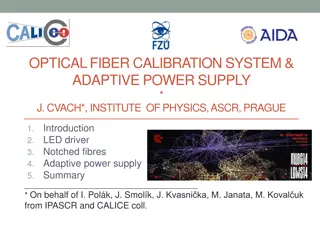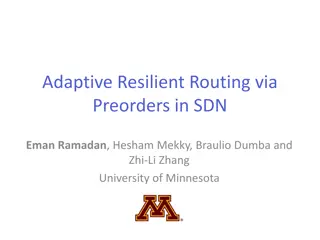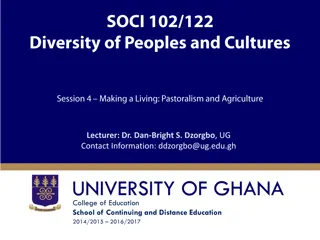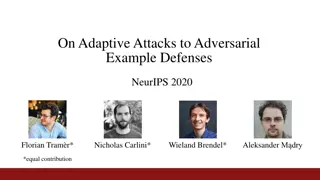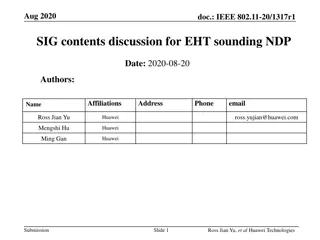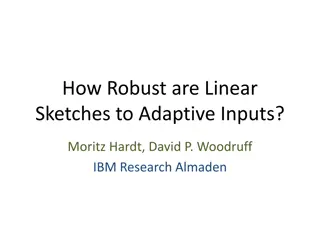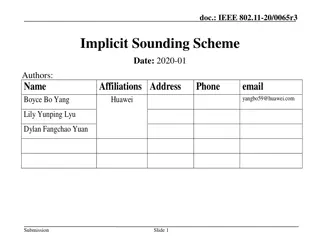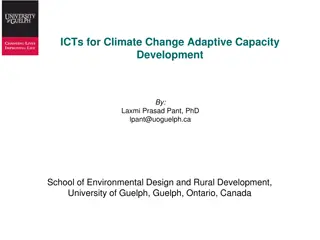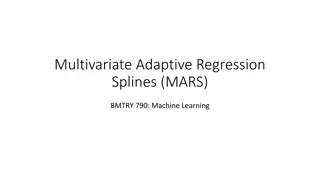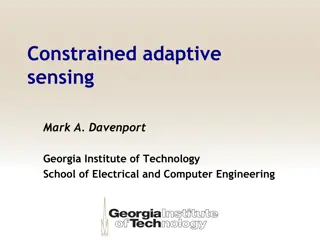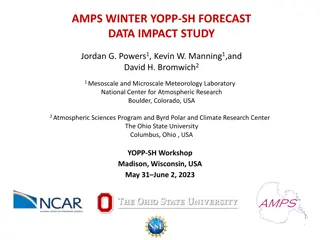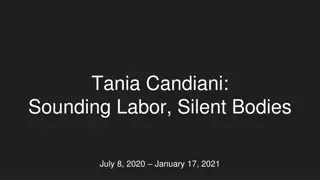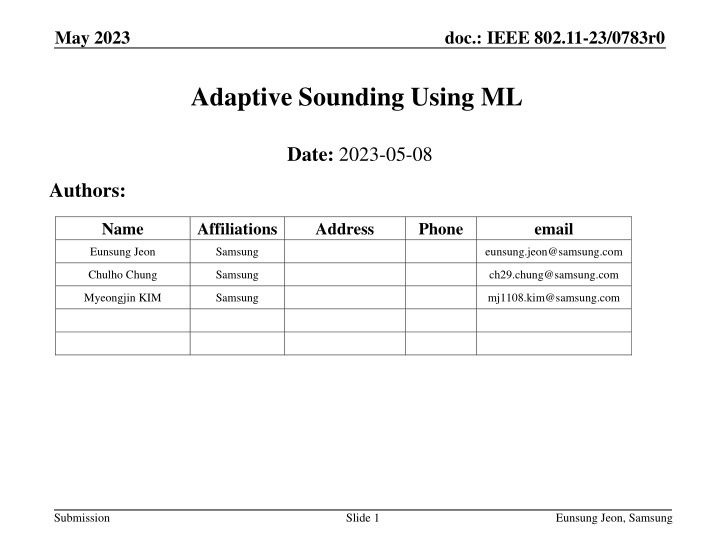
IEEE 802.11-23/0783r0 Adaptive Sounding Using Machine Learning
Explore how machine learning can enhance adaptive sounding in IEEE 802.11-23/0783r0 standard to address channel aging issues and improve throughput in WLAN systems. Learn about the proposed scheme utilizing machine learning to identify channel aging and optimize sounding intervals effectively.
Download Presentation

Please find below an Image/Link to download the presentation.
The content on the website is provided AS IS for your information and personal use only. It may not be sold, licensed, or shared on other websites without obtaining consent from the author. If you encounter any issues during the download, it is possible that the publisher has removed the file from their server.
You are allowed to download the files provided on this website for personal or commercial use, subject to the condition that they are used lawfully. All files are the property of their respective owners.
The content on the website is provided AS IS for your information and personal use only. It may not be sold, licensed, or shared on other websites without obtaining consent from the author.
E N D
Presentation Transcript
May 2023 doc.: IEEE 802.11-23/0783r0 Adaptive Sounding Using ML Date: 2023-05-08 Authors: Name Affiliations Address Phone email Eunsung Jeon Samsung eunsung.jeon@samsung.com Chulho Chung Samsung ch29.chung@samsung.com Myeongjin KIM Samsung mj1108.kim@samsung.com Submission Slide 1 Eunsung Jeon, Samsung
May 2023 doc.: IEEE 802.11-23/0783r0 Introduction Channel aging issue Inaccurate CSI results in severe inter-user interference for MU-MIMO, which leads to throughput degradation. The CSI accuracy depends not only on the accurate channel estimation of the BFee but also on the sounding interval. However, the frequent sounding increases the overhead. Trade off between collecting up-to-date CSI and reducing overhead. ... ... ... Beamformed Data Beamformed Data NDPA NDP NDPA NDP SIFS SIFS SIFS SIFS SIFS SIFS AP Compressed Beamforming Report Compressed Beamforming Report ACK ACK STA Sounding Procedure Sounding Procedure Sounding Interval Submission Slide 2 Eunsung Jeon, Samsung
May 2023 doc.: IEEE 802.11-23/0783r0 Main contribution Previous work Throughput based sounding interval determination [1] Trigger the sounding procedure (NDPA - NDP - (BFRP Trigger) Collecting CSI) when the throughput starts to degrading. In this contribution We propose a scheme utilizing the machine learning to identify channel aging. Submission Slide 3 Eunsung Jeon, Samsung
May 2023 doc.: IEEE 802.11-23/0783r0 Measurement of channel aging In TDD (time division duplex) based WLAN systems, channel reciprocity is hold for a short time. For machine learning, following data is collected through the ACK of the beamformed data. (Data 1) Channel frequency response The channel frequency response variance is calculated at time T as 2 2 1 ?? 1 1 1 ? ?=0 ?? 1 ?=0 ? 1 ??,?(?,?) ? 1 ??,?(?,?) 2(?,?) = ???? ?=0 ? ?=0 ?? ??,?(?,?) is the estimated channel of the f-th subcarrier, t-th time for the ij-th Tx-Rx link. (Data 2) RSSI The RSSI variance is calculated as 2 1 ?? 1 1 1 ? ?=0 2 ? 1(?????(?))2 ? 1?????(?) ?? ?=0 ? ?=0 ????? (?) = ?????(?) is the received signal strength indicator for t-th time for the i-th Rx antenna Submission Slide 4 Eunsung Jeon, Samsung
May 2023 doc.: IEEE 802.11-23/0783r0 Measurement of channel aging In addition, the non-AP STA may feed back channel status information such as MCS and SNR with a link adaptation (LA). AP can predict the downlink channel status. (Data 3) Link adaptation parameter Delta-SNR is the deviation in dB of the current SNR relative to the SNR of the previous LA, where the difference of the SNR is calculated as ) ???(?) = ??? ? ???(? VHT variant HT Control field for LA [2] Submission Slide 5 Eunsung Jeon, Samsung
May 2023 doc.: IEEE 802.11-23/0783r0 Channel aging determination A threshold-based determination can be used where the threshold is determined by heuristic way. Given SNR estimates, whether channel aging occurs is identified by comparing with a threshold value. Example If SNR > SNR_m & SNR SNR_(m+1), and ?? Then, channel aging does not happen Transmit beamformed data 2< TH_m SNR SNR_1 Th_1 SNR_2 Th_2 SNR_K Th_K Threshold Submission Slide 6 Eunsung Jeon, Samsung
May 2023 doc.: IEEE 802.11-23/0783r0 Channel aging determination To improve reliability and to avoid the heuristic approaches, ML technique can be exploited to identify the channel aging. Data collection Ex) X = (?? (?), ???) Apply ML (supervised learning) to identify the channel aging Ex) K-nearest neighbor, Decision tree, Random forest, Neural networks, Support vector machine (SVM), etc. Based on the result, whether channel aging occurs is identified. 2 2(?,?), ????? Channel variance Small varying / Excessive varying RSSI variance SNR Submission Slide 7 Eunsung Jeon, Samsung
May 2023 doc.: IEEE 802.11-23/0783r0 Feedback of channel aging indication Alternatively, the Non-AP STA may measure the down-link channel status and feedback channel aging indication to the AP. Non-AP STA can identify the channel aging by using ML. The format of ACK (Block ACK) should be be modified to carry this information. ... ... Beamformed Data NDPA NDP NDPA NDP SIFS SIFS SIFS SIFS SIFS AP Compressed Beamforming Report Compressed Beamforming Report Channel aging ACK STA Sounding Proces Sounding Process Sounding Interval Submission Slide 8 Eunsung Jeon, Samsung
May 2023 doc.: IEEE 802.11-23/0783r0 Simulation Results Simulation setup Neural networks with the 100 nodes on each of the two layers. Time varying channel model [3] Fast varying: >= 5 Km/h, Slow varying: < 5 Km/h Classification performance Almost 95% success can be achieved by using the ML. Submission Slide 9 Eunsung Jeon, Samsung
May 2023 doc.: IEEE 802.11-23/0783r0 Conclusion In this contribution, we proposed a dynamic sounding scheme for WLAN beamforming, which adjusts the sounding interval base on the real-time channel aging identified by ML. In the future, the throughput performance will be validated through the experimental test. Submission Slide 10 Eunsung Jeon, Samsung
May 2023 doc.: IEEE 802.11-23/0783r0 Reference [1] X. Ma, Q. Gao, J. Wang, V. Marojevic, and J. H. Reed, Dynamic Sounding for Multi-User MIMO in Wireless LANs, IEEE Transactions on Consumer Electronics, 2017. [2] 802.11-14/1329r2, Link Adaptation for HE WLAN, Newracom. [3] H. Yu and T. Kim, Beamforming Transmission in IEEE 802.11ac under Time-Varying Channels, The Scientific World Journal, Volume 2014, https://doi.org/10.1155/2014/920937 Submission Slide 11 Eunsung Jeon, Samsung



